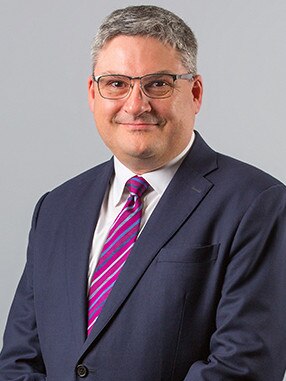Future Fund misses returns target, looks to new methods to regain ground
Australia’s sovereign wealth fund blamed market volatility for failing to achieve its target return for the year, but is exploring new strategies in its quest to achieve sustainable returns.
Australia’s sovereign wealth fund blamed market volatility for failing to achieve its target return for the year, but said it was exploring new strategies – including seeking “skilled” active managers and investing in small companies for the first time – in its quest to achieve sustainable returns.
“The effects of higher rates are playing out in different ways across different markets around the world, making investing conditions unpredictable,” Future Fund chairman Peter Costello said on Thursday. “Against this backdrop the Future Fund delivered a positive 1.1 per cent return for the 12 months.”
That result compared with an annual target return of 11 per cent, and a 3.7 per cent loss in the 12 months ending December 31, when it found it impossible to make money.
Raphael Arndt, the Future Fund’s chief executive officer said the exceptionally favourable conditions that made it easier to find returns – namely extra cheap money, global economic stability and low inflation – were a thing of the past. As such, the 17-year old fund said it was willing to try things that it had never done before.
“Benign conditions that endured for decades are in the process of significant change, demanding that investors explore new ways to deliver sustainable, long-term returns,” Mr Arndt said.
“We are making continuing changes to the portfolio towards investments that rely on investor skill rather than market risk, reflecting our belief that this approach will be better rewarded in an environment where higher inflation and rates make market returns less certain.”

Mr Arndt told a conference in Sydney the $250bn fund was doing “a lot” to change how it invests in the new environment.
“Just having capital is no longer enough to ensure decent returns. There are no set-and-forget investments any more,” he told the Australian Financial Review conference.
“Around six years ago we pivoted our Listed Equities approach away from active managers. Our view was that it was nigh on impossible for active equities managers to consistently add value over and above their fees. Conditions have changed.
“For example, changes in domestic markets have made small cap equities attractive to us for the first time and we have commenced a new program to invest in them in recent months,” he said.
The fund was using technology to assess the source of alpha – or extra return – managers, and would only invest in those whose performance was driven by skill, which he said was a rare and expensive ability.
“Economies are diverging and companies can better distinguish themselves in a more challenging environment. As a result, active Alpha-seeking strategies in our $65bn listed equities program are increasingly attractive,” he said.
Technology was helping the fund better integrate its ESG – environmental social and governance – policies into its investment decisions. It had integrated transition and physical climate risk scenarios into its whole-of-portfolio investment strategy.
Mr Arndt said the fund would move to protect itself from scenarios where sticky inflation could lead to prolonged higher rates, and from the risk of a global recession.
“The risk of this type of stagflationary environment is rising,” he said.
In the three months to March 31, the fund increased its allocation to global and local equities and reduced investments in private equity.





To join the conversation, please log in. Don't have an account? Register
Join the conversation, you are commenting as Logout